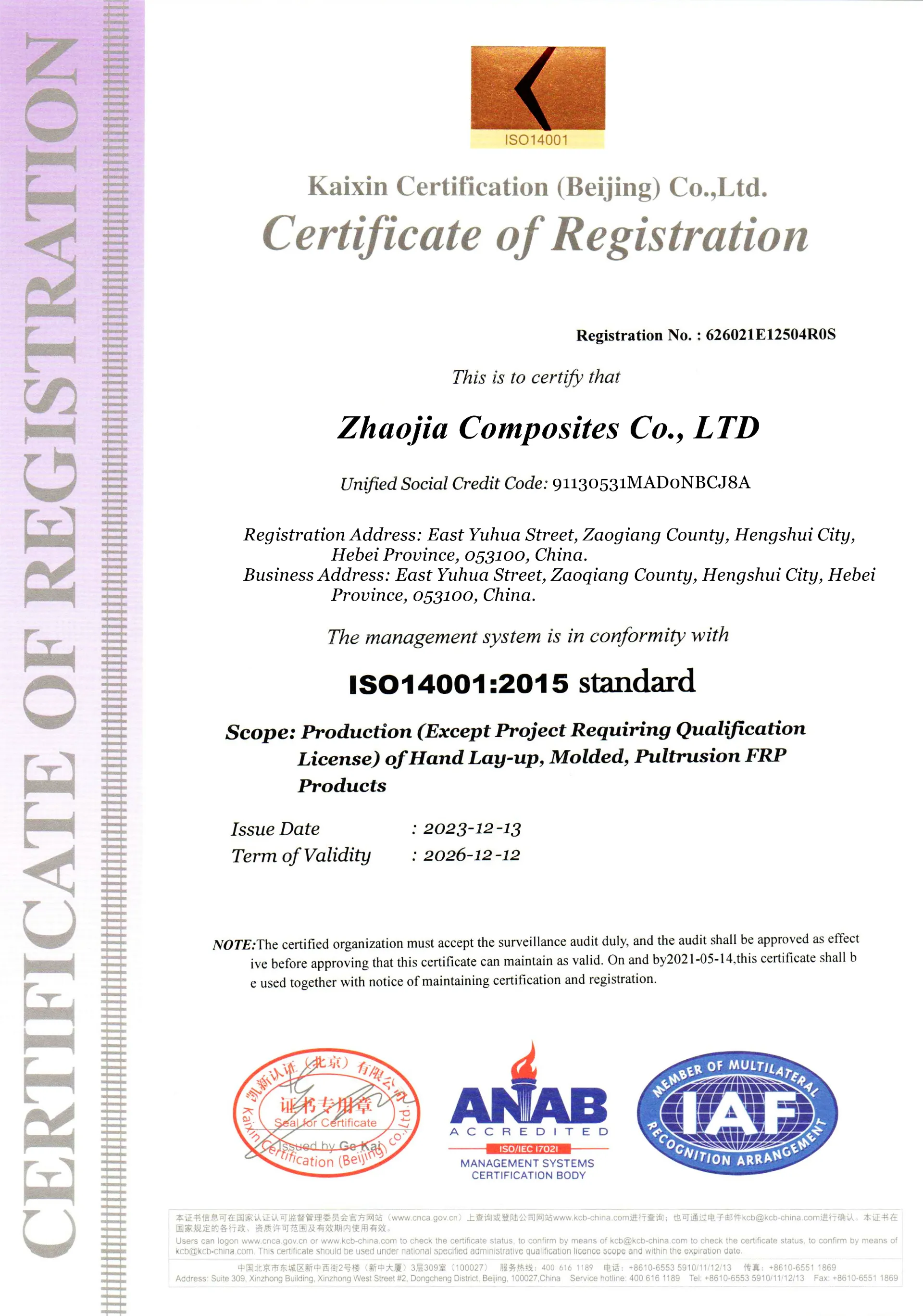loading...
- No. 9, Xingyuan South Street, Dongwaihuan Road, Zaoqiang County, Hengshui, Hebei, China
- admin@zjcomposites.com
- +86 15097380338
- Welcome to visit our website!
water treatment equipment
Water Treatment Equipment Ensuring Clean and Safe Water
Water is an essential resource for all forms of life, making the treatment and purification of water crucial for public health and environmental sustainability. As the demand for clean water continues to grow worldwide, the water treatment equipment industry plays a vital role in providing effective solutions for water purification. This article explores various types of water treatment equipment, their applications, and the importance of adopting advanced technologies in water management.
Types of Water Treatment Equipment
Water treatment processes generally fall into several categories, each requiring specific equipment to achieve desired results. The primary types of water treatment equipment include
1. Filtration Systems These systems use physical barriers to remove solid particles and sediments from water. Common types of filters include sand filters, activated carbon filters, and membrane filters. Filtration is often the first step in purifying water, as it helps remove larger contaminants before more advanced treatments are applied.
2. Chemical Treatment Equipment This category includes devices that add chemicals to water to facilitate the removal of impurities. For example, chlorination systems introduce chlorine or chlorine compounds to disinfect water, effectively killing harmful pathogens. Coagulation and flocculation units are also used to aggregate suspended particles, which are then removed through sedimentation or filtration.
3. Reverse Osmosis Systems Reverse osmosis (RO) is a highly effective water treatment method that uses a semi-permeable membrane to separate contaminants from water. It significantly reduces the concentration of dissolved solids, making it ideal for treating seawater to produce fresh drinking water, as well as for purifying water in industrial applications.
4. Ultraviolet (UV) Disinfection Systems UV systems utilize ultraviolet light to destroy bacteria, viruses, and other microorganisms in water. This method is chemical-free and leaves no residual contaminants, making it a safe and environmentally friendly option for disinfection.
water treatment equipment

5. Desalination Equipment In regions where freshwater sources are scarce, desalination equipment is critical. These systems convert seawater or brackish water into potable water, utilizing methods such as reverse osmosis or thermal distillation.
Importance of Water Treatment Equipment
The significance of water treatment equipment cannot be overstated. First and foremost, it is essential for safeguarding public health. Contaminated water can lead to serious health issues, including waterborne diseases, which can have devastating consequences in affected communities. By employing effective water treatment technologies, municipalities and industries can provide safe drinking water and prevent health crises.
Moreover, with increasing pollution and depletion of natural water sources, the role of water treatment equipment in sustaining the environment becomes critical. Advanced treatment systems can remove harmful substances from water, allowing for the safe return of treated water to ecosystems. This not only protects aquatic habitats but also ensures that water bodies remain viable for recreational and economic activities.
Additionally, water treatment equipment is vital for industries that require high-quality water in their processes. Sectors such as pharmaceuticals, food and beverage, and electronics depend on stringent water quality standards. Implementing reliable water treatment solutions helps these industries comply with regulations and maintain product quality.
Conclusion
In conclusion, the evolving landscape of water treatment equipment reflects the growing demand for clean, safe, and sustainable water solutions. As technology advances, new and innovative systems continue to emerge, enhancing the efficiency and effectiveness of water treatment processes. Investing in modern water treatment equipment is not only an obligation for public health but also a step towards ensuring environmental sustainability and economic resilience. With an increasing focus on sustainable practices, the future of water treatment promises to be both challenging and rewarding, emphasizing the need for ongoing research and development in this essential field.
-
The Rise of FRP Profiles: Strong, Lightweight, and Built to LastNewsJul.14,2025
-
SMC Panel Tanks: A Modern Water Storage Solution for All EnvironmentsNewsJul.14,2025
-
GRP Grating: A Modern Solution for Safe and Durable Access SystemsNewsJul.14,2025
-
Galvanized Steel Water Tanks: Durable, Reliable, and Ready for UseNewsJul.14,2025
-
FRP Mini Mesh Grating: The Safer, Smarter Flooring SolutionNewsJul.14,2025
-
Exploring FRP Vessels: Durable Solutions for Modern Fluid HandlingNewsJul.14,2025
-
GRP Structures: The Future of Lightweight, High-Performance EngineeringNewsJun.20,2025
